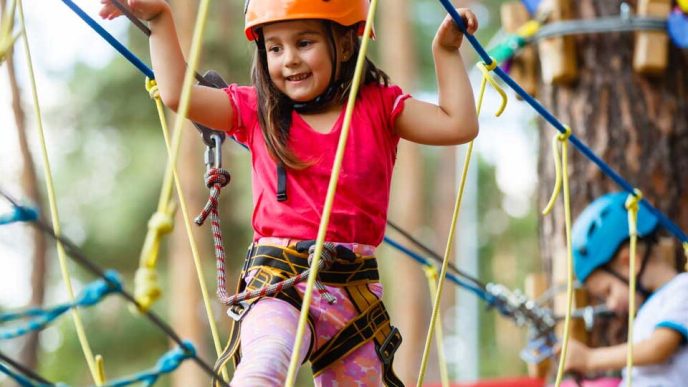Posture That Speaks Before You Do
Step into a ballet studio and the first lesson isn’t a step at all—it’s alignment. From the crown of the head to the tips of the toes, dancers learn how the body stacks: ribs knit, spine lengthened, shoulders wide, gaze lifted. That precision isn’t about looking “posed.” It’s about efficiency—how to stand, sit, and move so bones bear weight and muscles support without strain. Over time, this becomes second nature, and you carry it into the grocery line, the classroom, the meeting.
Good posture does more than polish your silhouette. It changes how you’re perceived and how you feel. Upright alignment communicates calm authority, the kind that arrives in a room before you say a word. It also eases the slow ache of modern life—less slouching, fewer neck kinks, a back that thanks you at the end of the day. Ballet’s training reeducates the nervous system to prefer this balance, replacing effort with ease.
Ritual, Repetition, and the Quiet Power of Discipline
Barre, centre, across the floor—a ballet class is like a movie. The sequence changes little—you do. Students strive for cleaner turnout, softer landings, and truer melody within that routine. Gradual progress teaches the mind to favour consistency over novelty and precision over speed.
That discipline applies to life without theatrical speeches. Like finishing a combination, you meet deadlines on the count every time. You learn to tolerate the middle of a project, when the initial excitement fades and finishing is still far off. Ballet uses repetition as rehearsal, not punishment.
Emotional Literacy Through Movement
Ballet is storytelling without a microphone. A tendu can be tender or defiant, a port de bras can whisper or shout. Students learn to identify an emotion, embody it, and release it—all while staying technically honest. That practice builds a kind of emotional literacy: you notice what you feel, you choose how to express it, and you stay present instead of being swept away.
A skill that appears offstage. Years of reading music and space make you read rooms faster. Because you focus on your muscles and breath, you detect stress and tiredness. Dance taught you to edit movement with intention, so when unpleasant talks come, you notice tone, timing, and the difference between reacting and responding.
Grace in Motion—and in How You Treat People
Grace in ballet isn’t just step-to-step polish; it’s spatial awareness. Dancers learn to move with others, to claim space without crowding, to offer a hand on a lift and a beat of breath so timing syncs. That sensitivity turns everyday movement into choreography: how you navigate a crowded hallway, how you set a bag down without a thud, how you make eye contact as you enter a meeting.
Same awareness guides your treatment of others. Ensemble work needs body-wide listening. You appreciate unity, honour others’ moments, and share emphasis. In life, that becomes seamless collaboration—landing discussions, duet teamwork rather than debate. Grace becomes an ethic—controlled power, gracious timing, attentive presence.
Confidence Built the Old‑Fashioned Way: Mastery
Your body gains gritty, silent confidence when it does something it couldn’t do three months earlier. First balanced turn. The floating jump. Phrasing that suddenly matches music. Mastery rewires your self-belief through practice, feedback, and try-again resolve, not pep lectures.
Enhanced by performance. A 10 a.m. presentation under stage lights for nervous breathers. lands differently. Ballet normalises slips, wobbles, and missing counts, then teaches recovery: finish the phrase, reset, continue. That resiliency spreads. You learn to embrace mistakes and improve.
Balance, Alignment, and the Mechanics of Ease
Ballet gives the body spatial awareness. Proprioception and the vestibular system—your internal GPS and gyro—improve with every relevé and turn. Feet, hips, and core stabilisers activate. Breath becomes an aid. Momentum and time allow brute force movements to perform more with less energy.
That mind-body conversation pays dividends during everyday tasks: carrying groceries without hunching, reaching high without wrenching the shoulder, standing for long stretches without fidgeting or fatigue. When alignment is trained, strain is optional. Efficiency frees up attention for the things that matter—listening in a conversation, crafting an idea—because your body isn’t shouting for constant micromanagement.
An Eye for Beauty: Music, Design, and Aesthetic Awareness
Ballet works the eyes and ears as well as muscles. Your internal metronome and phrasing improve with music hours. Speech rhythm and crowd cadence become apparent. Listening becomes art. Line, symmetry, contrast, and negative space gain significance in the visual world. You know how a room’s layout guides movement, how colour affects mood, and how details matter.
Appropriate clothes, presentation, workstation, and event planning can reflect aesthetic knowledge. Not perfectionism, but intention. Ballet teaches that small choices—a wrist tilt, head angle, breath before a phrase—add up and show care. That attention manifests as taste, intellect, and a knack for cinematizing the mundane.
FAQ
What everyday benefits does ballet training provide?
It improves posture, balance, and body awareness while strengthening discipline, emotional regulation, and social grace.
Does good posture from ballet really reduce discomfort?
Yes—efficient alignment distributes load through bones and joints, which can ease neck, back, and shoulder strain.
Can ballet help with anxiety or stress?
Focused movement, breath control, and musical structure offer a grounding routine that can calm the nervous system.
Is ballet only for kids or aspiring professionals?
No—its principles benefit beginners and adults at any level, whether or not performance is the goal.
How does ballet training affect teamwork?
Ensemble work builds timing, spatial respect, and shared focus, which translate directly to collaborative settings.
Will ballet make me more confident in public settings?
Performing and practicing under pressure foster poised presence and recovery skills that boost everyday confidence.














